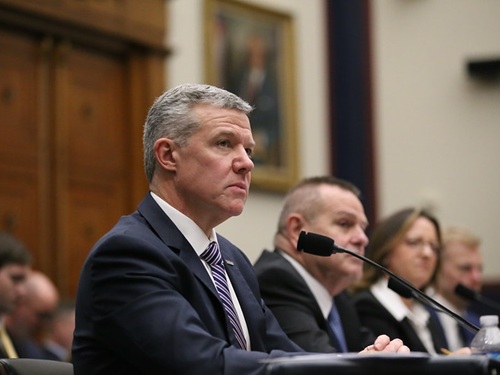A hearing held by the House of Representatives Transportation and Infrastructure Committee on January 22 examined highway policy priorities for the next surface transportation reauthorization legislative package.
[Above photo via the House T&I Committee]
The current surface transportation authorization – the Infrastructure Investment and Jobs Act or IIJA – is set to expire on September 30, 2026, so the House T&I committee made developing a comprehensive reauthorizing bill a top priority for the 119th Congress.
To that end, the hearing – overseen by the House T&I’s Subcommittee on Highways and Transit – solicited input from a range of transportation industry stakeholders.
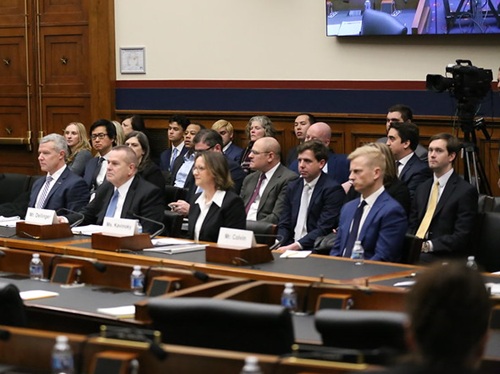
The hearing featured testimony from Jim Tymon, executive director of the American Association of State Highway and Transportation Officials; Dennis Dellinger, president and CEO of Cargo Transporters, Inc. and chairman of the American Trucking Associations; Janet Kavinoky, vice president-external affairs and corporate communications for Vulcan Materials Co., on behalf of the National Stone, Sand & Gravel Association; and Matthew Colvin, chief of staff for the Transportation Trades Department within the American Federation of Labor and Congress of Industrial Organizations or AFL-CIO.
Tymon noted he testified in place of Russell McMurry, commissioner of the Georgia Department of Transportation and AASHTO’s Vice President, as Georgia declared a state of emergency ahead of a major winter storm and Georgia DOT is the agency tasked with leading the state’s storm response.
Tymon’s written testimony focused on the importance of “sound policy and stable funding” provided through multiyear surface transportation bills.
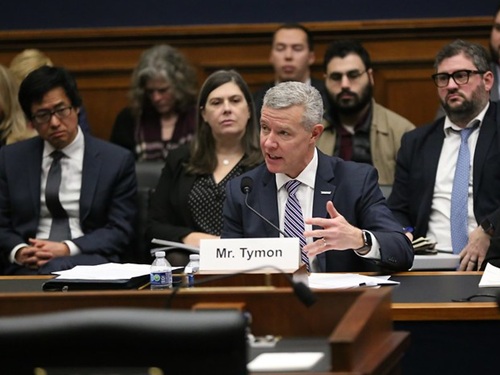
“Short-term extensions can make it difficult for state DOTs and local governments to plan and execute contracts for important highway and transit projects, for a safe, interconnected, well-maintained, and well-operated national transportation network is essential to our nation’s security and our nation’s economy [and] quality of life,” he said in his written remarks.
“That is why relying on short-term authorizing program extensions can cause unnecessary program disruptions, uncertainty, and delays in safety and mobility benefits to states and communities,” Tymon pointed out.
He also stressed that formula-based funding “remains foundational” to the work of every single state department of transportation across the country.
“Formula dollars provide stability, predictability, and efficiency, allowing state and local governments to plan and deliver projects effectively,” Tymon explained. “If there is a desire to address additional priorities, the most efficient way to meet those priorities is through expanded eligibility within existing formula programs.”
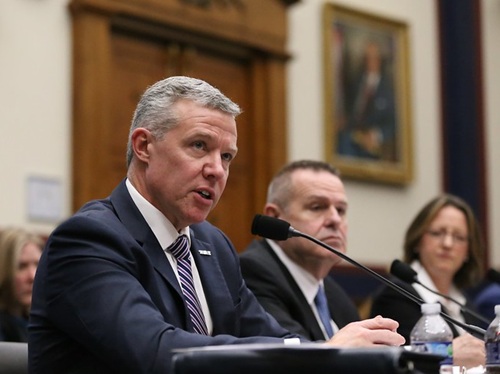
In contrast, he said that discretionary programs have proven to be problematic. “The process around discretionary grants has shown to be slow, burdensome, and less efficient in turning federal funds into projects and benefits compared to the deployment of formula funding provided to state DOTs,” Tymon noted.
He pointed out another major challenge as well: the impact of inflation. “A 70 percent increase in highway construction costs in the last four years means states have actually lost ground on purchasing power,” Tymon said. “Even with IIJA’s nominal funding increases, that represented only a 20 to 25 percent boost for state DOT formula dollars.”
And while the hearing focused on highway program funding needs, he stressed that federal transit and passenger rail programs are also critical to meeting the broad mobility needs of this country.
“All state DOTs are truly multimodal … [and] focus on transit, rail, aviation, [plus] ports and waterways to create a seamless and connected transportation system,” Tymon emphasized.
Tymon also outlined other key surface transportation reauthorization priorities for state DOTs in his testimony:
- Increase the extent to which formula funding is prioritized over discretionary funding by ensuring that 95 percent or more of authorized Highway Trust Fund highway dollars go to apportioned programs for states.
- Maintain and expand state DOT authority to transfer apportionment dollars among funding formula categories, ensuring the optimal balance and alignment of federal, state, and local transportation goals including safety, mobility, and the improvement of the nation’s transportation network.
- Reversing an FHWA final rule issued in early January that ended the longstanding “Build America, Buy America” waiver for manufactured products. “We continue to recommend a more gradual and deliberate ‘Build America, Buy America’ transition that minimizes disruptions to state DOT efforts to deliver important projects efficiently, on time, and within budget,” Tymon said. “Strategic and nuanced waivers can be and are a practical way to balance current availability of domestic sourcing with the public expectation of on-time and on-budget delivery of transportation projects.”
- Provide a permanent fix to the “August Redistribution” of federal-aid highway program dollars that, which, combined with legislative provisions within the Thomas R. Carper Water Resources Development Act of 2024, would reduce “August Redistribution” dollars down to nearly zero within the next three years.
- Remove regulatory and programmatic burdens associated with federal programs that delay project delivery, including environmental review, while engaging in permitting reform where possible – especially by consolidating duplicative permits and reviews overseen by the U.S. Coast Guard, U.S. Army Corps of Engineers, National Marine Fisheries Service, and the U.S. Fish and Wildlife Service.
- Build upon the investment provided by the IIJA funded through the Highway Trust Fund and General Fund advance appropriations as necessary, allowing transportation funding to keep pace with inflation at a minimum. “Funding should grow steadily year-to-year over the life of the next surface transportation authorization bill to allow states to keep up with growing needs for a strong economy,” Tymon said.
- Implement programmatic agreements between federal agencies, such as FHWA and the Federal Emergency Management Agency, for greater coordination and efficiency of emergency relief activities. AASHTO also recommends increasing funding for the Federal Transit Administration’s Emergency Relief account and for increased funding flexibility under FHWA’s Emergency Relief Program to support projects that increase resiliency.
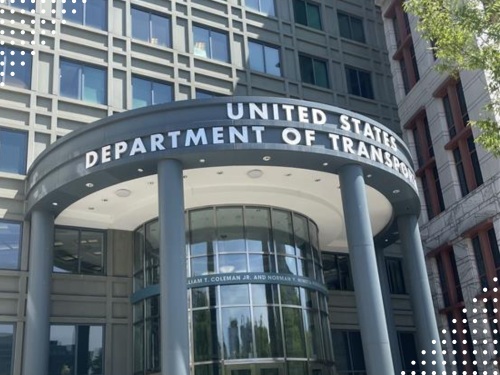 Top Stories
Top Stories
USDOT Makes $1.5B Worth of BUILD Grants Available
December 19, 2025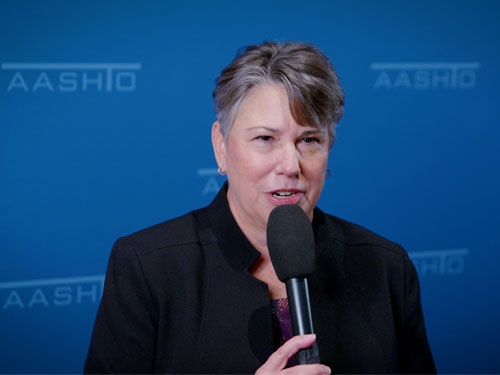 Top Stories
Top Stories
